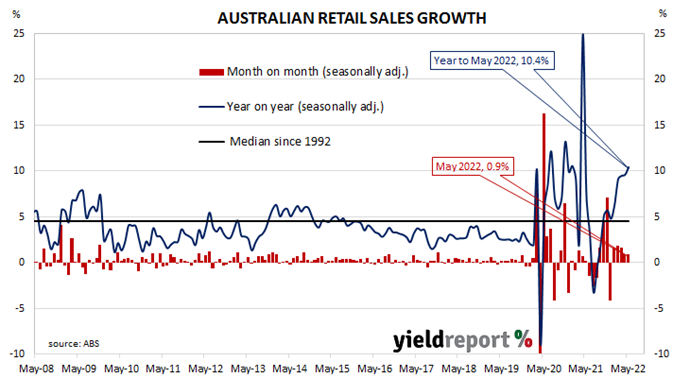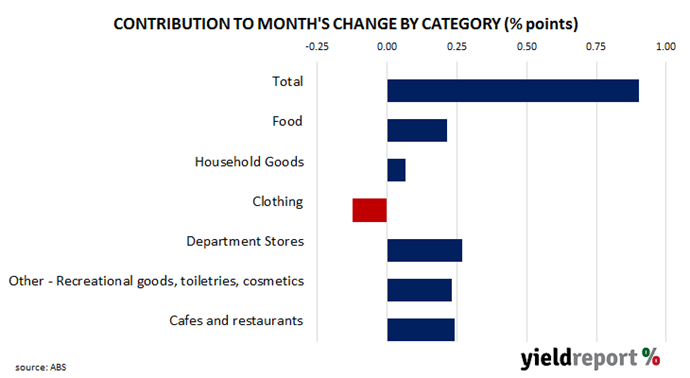Summary: Retail sales up 0.9% in May; higher than expected; broader spending holding up, reflects tight job market, strong household balance sheet; shift towards higher prices, slower volume growth; largest influence on month from department store sales.
Growth figures of domestic retail sales spent most of the 2010s at levels below the post-1992 average. While economic conditions had been generally favourable, wage growth and inflation rates were low. Expenditures on goods then jumped in the early stages of 2020 as government restrictions severely altered households’ spending habits. Households reverted to their usual patterns as restrictions eased in the latter part of 2020 and throughout 2021, although not for all categories.
According to the latest ABS figures, total retail sales increased by 0.9% in May on a seasonally adjusted basis. The rise was noticeably greater than the 0.3% increase which had been expected but in line with April’s rise. On an annual basis, retail sales increased by 10.4%, up from April’s comparable figure of 9.6%.
“This release shows broader spending continues to hold up, reflecting the tight labour market and strong balance sheets of households,” said Morgan Stanley Australia economist Chris Read. “While the increasing headwinds of higher rates and lower house prices have already had a significant impact on consumer sentiment, it does not look to be flowing through to spending at this stage.”
Commonwealth bond yields fell noticeably on the day. By the close of business, the 3-year ACGB yield had shed 7bps to 3.46%, the 10-year rate had lost 5bps to 3.76% while the 20-year yield finished 6bps lower at 3.94%.
In the cash futures market, rate-rise expectations softened a little. At the end of the day, contracts implied the cash rate would rise from the current rate of 0.81% to 1.195% in July and then increase to 1.685% by August. November contracts implied a 2.835% cash rate while May 2023 contracts implied 3.71%.
“The key question is the extent to which the sustained momentum in nominal sales is concealing a shift towards higher prices and slower growth in volumes,” said Westpac senior economist Matthew Hassan.
Retail sales are typically segmented into six categories (see below), with the “food” segment accounting for nearly 40% of total sales. However, the largest influence on the total during the month came from the “Department Stores” segment which increased by 5.1% over the month and thus contributed 0.27 percentage points of the 0.90% increase. Clothing sales fell by 1.4% over the month and deducted 0.12 percentage points.



